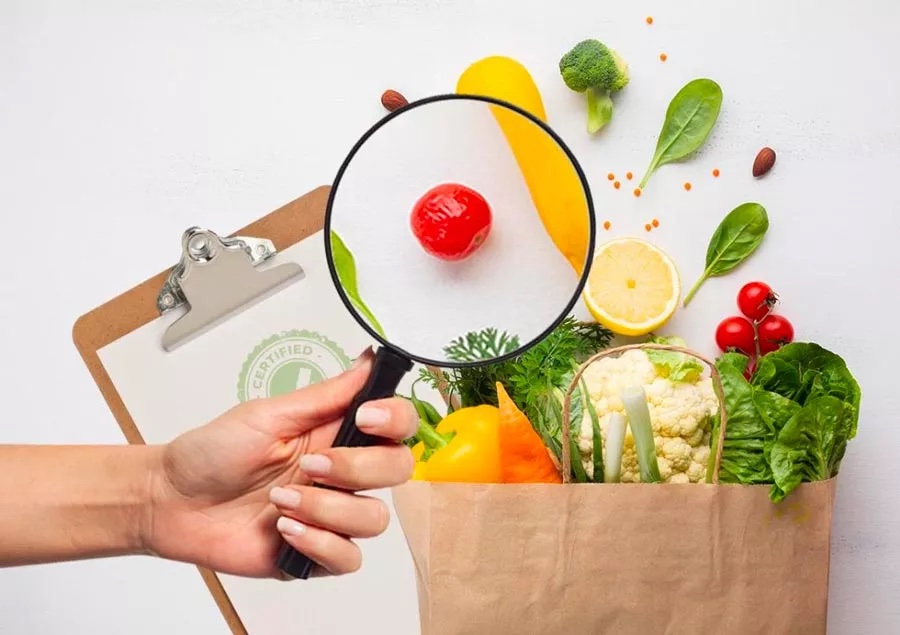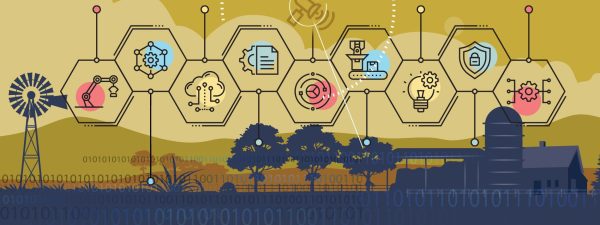IoT technology offers myriad benefits for numerous industries, and the food industry is no exception. One of the essential elements of the food industry is cold storage, which preserves raw foods for a certain period of time. Though it may sound simple, cold storage is, in fact, anything but. Factors such as humidity and temperature, for example, can adversely impact foods.
Clearly, a functional and reliable food temperature monitoring process is required to ensure the safety of foods. That’s why it’s vital to create ideal temperature settings in cold freezers so that food remains fresh and edible. Fortunately, IoT technology has firmly planted itself within the food industry and is ready to revolutionize it with a food temperature monitoring system.
Chew on this: Exploring the inner workings of food temperature monitoring in IoT
Maintaining ideal temperatures for food items is necessary to preserve their quality. Whether stored in freezers, walk-in coolers or meat drawers, most food items require adequate temperature settings to ensure their quality.
Of course, food temperature needs to be properly monitored throughout the day. To effectively implement this monitoring process, food businesses are leveraging IoT technology that is producing impressive results.
Specifically, IoT food temperature monitoring utilizes wireless IoT sensors. These sensors are used in refrigerators, salad stations, prep stations, milkshake machines, meat drawers, and other places to monitor temperature settings.
When the temperature of food falls below or above a user’s set temperature parameters, that user will be automatically notified by the sensors. A user can then either physically or remotely address the problem. This significantly improves the food temperature monitoring system and yields more efficient operations.
What are the food industry’s biggest challenges?
There are several challenges in the food industry, all of which can be solved with an IoT food temperature monitoring system. These challenges include the following:
- High Food Wastage
One of the biggest problems within the food industry is high food waste in daily operations. Whether it’s a food storage business or a restaurant, the amount of food regularly wasted due to improper storage conditions is substantial.
IoT can significantly help counter this challenge with its effective monitoring processes that ensure no food gets unnecessarily wasted.
- Food Compliance
The role of compliance in the food industry is extremely important, since it can directly impact people’s health. That’s why the rules and regulations within the food industry are numerous.
Fortunately, IoT technology makes it easier for users to comply with these rules and regulations. IoT devices gather real-time data and track key performance indicators involving food that help ensure the safest handling when it comes to food items.
- Ineffective Temperature Tracking
Monitoring the temperature of the food at regular intervals ensures that ingredients stay fresh and nutritious. However, it can often prove difficult for owners within the food service industry to regularly check food temperatures when they’re busy with customers. This is a challenge faced by most food businesses that IoT technology can address.
- Loss of Revenue due to the Use of Tainted Food
Food becomes contaminated if it’s not stored under ideal temperature conditions. This is a huge problem that results in high food wastage and loss of revenue for food businesses. The best solutionis to adopt an IoT food temperature monitoring system.
Chill factor: How food temperature monitoring is addressing the food industry’s challenges
An IoT food temperature monitoring system can effectively stop food wastage while providing the best food for customers. Here is how food temperature monitoring overcomes various challenges within the food industry:
- More Informed Decisions with Higher Data Collection
IoT sensors deployed in the equipment help gather data about food temperature, humidity level, on/off conditions and more. This data provides insightful information about food conditions and helps business owners make more informed business decisions.
- Better Productivity with Seamless Communication
The IoT technologies embedded in the food systems are able to seamlessly communicate with each other. This means that business owners can equip their AI models with set instructions for different machines. These machines are interconnected and work in sync to achieve more productivity in food operations.
- Effective Administration Management
A significant benefit of leveraging IoT systems is improved administrative management. This means that, as IoT automates more and more equipment processes, administrators can more effectively manage operations and produce desired results.
- Better Results with Visualizations
These IoT systems are well-designed and provide workable user interfaces to determine the progress of various food parameters. For example, users can check operational reports via their smartphones in order to strategize plans for improved work efficiency.
IoT food temperature monitoring offers a fresh and far-reaching approach
A number of parameters can be checked and analyzed using IoT food temperature monitoring systems. These include:
- Freshness Periods of Foods
The freshness of food can be easily assessed with IoT food temperature monitoring systems. Foods that are kept at ideal temperatures remain fresher longer and hold more nutrition.
- Product Condition
IoT monitoring systems also consistently monitor food product conditions and analyze if food is safe to eat. If food has become unsafe to eat, then IoT sensors will alert the user and prompt them to discard the unsafe food items.
- Inventory Monitoring
Keeping your food inventory regulated at an ideal temperature is necessary for food safety. IoT systems can check the temperature level of inventory so that food items stay fresh and protected.
- Food Decay
Food can easily decay if not stored properly in refrigerators or is left unattended for a period of time. However, with the right IoT systems, food decay can be avoided entirely, as sensors will notify the admin on site about any stale food.
- Shelf Life of Foods
IoT systems are also capable of monitoring the shelf life of the food. Shelf life determines how long food can stay in cold storage without spoiling. IoT monitoring systems can use food more effectively by alerting admins to use those food items with shorter shelf lives first.
But is it really necessary?
So, is IoT food temperature monitoring really necessary? The answer is a resounding ‘yes’ when you consider the following:
1. Effective Monitoring
One of the fundamental reasons for adopting an IoT food temperature monitoring system is its high efficiency. Unlike traditional systems where food temperature monitoring is done manually, IoT systems are able to remotely monitor food temperature and adjust the temperatures accordingly.
2. Energy Saving
IoT is arguably the most evolved technology of its time, improving process efficiency and subsequently significantly lowering energy needs. An IoT system monitors real-time data, which enables it to oversee equipment energy needs and regulate them for improved efficiency.
3. Reducing Waste
Since the IoT system actively monitors the temperature of food items, the chances of food getting spoiled is substantially lowered. This helps with effective food waste management.
4. Improved Food Quality
IoT food temperature monitoring also enhances the quality of food items. As the temperature of foods is automatically and continuously adjusted, these foods are able to maintain their freshness.
5. Simple and Effective Process
An IoT food temperature monitoring system is a must for all food businesses as it hugely boosts the efficacy of the process. Food businesses can effortlessly maintain higher quality foods without needing to frequently check their condition.
6. Automated Control
An IoT food monitoring system automates food equipment control and temperature settings. This means that workers will have more time to focus on improved customer service.
7. Food Stays Fresher Longer
Lastly and perhaps most importantly, IoT food temperature monitoring allows foods to stay safer and fresher longer.
Fresh is best
IoT food temperature monitoring systems not only reduce food waste and ensure the freshness of food but also increase business profitability. Sounds like a fresh idea if we’ve ever heard one.
Kamal Rupareliya is a director of products at Intuz. An expert in IoT, mobile design and product strategy, Kamal loves finding inventive ways of creating remarkable digital software products.





